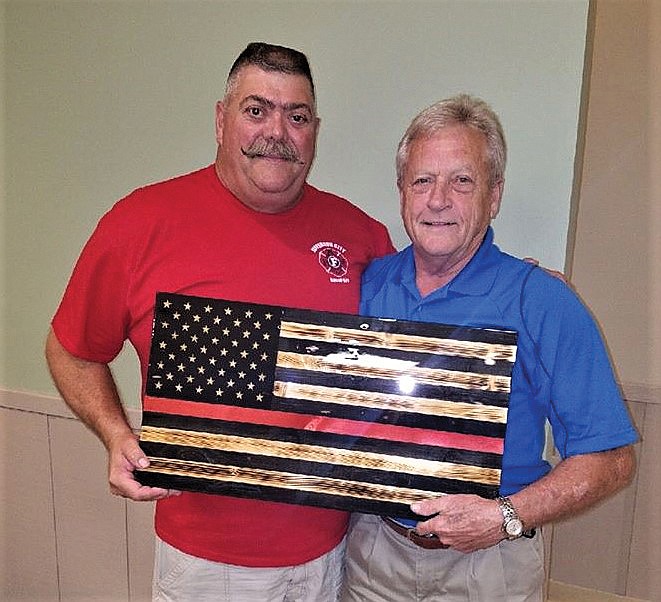As a young man, Bill Farr pursued an interest in public service by volunteering as a firefighter in a rural district and later became a reserve police officer in small community.
This was followed by appointment as state fire marshal for Missouri and more recently as director of Cole County Emergency Management. These were opportunities, he explained, that progressed from initial inspiration he received when just a young soldier in the U.S. Army.
When graduating from high school in Springfield in 1968, Farr began working for a local automotive parts supply company, gaining practical work experience that would unexpectedly shape the direction of his approaching military service.
"It was pretty evident with the Vietnam War going on that I was going to be drafted at some point," Farr said. "So, in the end, I made the decision to go ahead and volunteer for the draft."
Inducted in October 1969 in Kansas City, he was sent to Fort Jackson, South Carolina, to undergo his basic training to become a soldier in the U.S. Army. For the next several weeks, he endured the regimen of many a fellow soldier by participating in "forced marches" and field exercises that introduced the trainees to the vexing bites of the notorious sand fleas.
"Since I had worked in a supply capacity with the automotive parts company back home, they made me a 76 'Yankee' (76Y is a former U.S. Army designation for supply specialists). It was a situation where I didn't have to complete any further training, they just assigned me that specialty," Farr said.
Presuming he was destined for deployment to Vietnam, Farr was sent to Fort Lewis, Washington, in late January 1970 to await his next set of orders. A week following his arrival, a sergeant came into the barracks where he was staying and read a list of names, which happened to include Farr's.
"The sergeant told us to go down to supply and draw some Arctic gear because we were being sent to Fairbanks, Alaska," he recalled. "It was decent weather when we left Seattle, but when we arrived in Fairbanks two or three days later, it was pitch black, minus 40 degrees and waist-deep snow."
Upon his arrival in Fairbanks, he was detailed to the supply section of Company A, 171st Infantry Brigade stationed at Fort Wainwright. Initially established as an airfield by the U.S. Army Air Corps in 1939, the fort has since become a testing site in the development of cold weather gear and equipment, and is also home to the Northern Warfare Training Center.
An important role of the brigade, Farr noted, was the maintenance, security and operation of Nike Hercules missile sites situated along the Alaskan mountain ranges, providing a network of Cold War air defenses against the potential threat of attack by Soviet aircraft.
Farr said, "It was just the supply sergeant and myself in my section and, looking back, it was pretty good duty. We had medics, office support staff, vehicle maintenance personnel and infantry in the company and we operated the supply room that supported all of them."
In addition to his regular duties supporting the logistical needs of the company, the brigade conducted frequent war games with their counterparts in the Canadian military. The soldiers also participated in such exercises as snowshoe training, learning to perform their duties in an operational cold-weather environment.
"Summers were beautiful, but the winters were tragic," he chuckled when reflecting on his military experiences. "One time, we had a blizzard, and there were some soldiers that had gone to town but couldn't get back to post for three or four days. The snow was piled higher than the street signs."
While stationed in Alaska, Farr transitioned from the company level to supply positions in the battalion and brigade, eventually becoming an acting sergeant. In July 1971, he was provided an early discharge to return home to begin vocational training.
In the years following his return to Springfield, the veteran married, became father to two children and embarked upon a continued career in public service by becoming a volunteer firefighter. Elected fire chief of his rural department in 1976, he later acquired law enforcement certification and became a reserve officer for Republic.
"I was hired as the first full-time fire chief of Republic in 1983," Farr said. "Three years later, I was hired by the state fire marshal to oversee the investigation of fires in 26 counties in southwest Missouri."
In 1994, Farr moved to Jefferson City to accept a deputy chief position with the state fire marshal. The next year, after the unexpected death of the state fire marshal, he was appointed to the position by then-Gov. Mel Carnahan. Retiring in 2005, he was hired as director of Cole County Emergency Management in 2008, remaining in the position until retiring earlier this year.
When contemplating his many years invested in public service, Farr remarked of his U.S. Army experience, "It was a scary time in a young person's life, especially with everything going on with the Vietnam War. But, I felt that I had a responsibility and the good Lord decided to send me to Alaska."
"The Army gave me experiences I will never give up and important lessons I have always cherished like helping others, which is something I have enjoyed doing my entire life," he said.
Jeremy P. Amick writes on behalf of the Silver Star Families of America.

